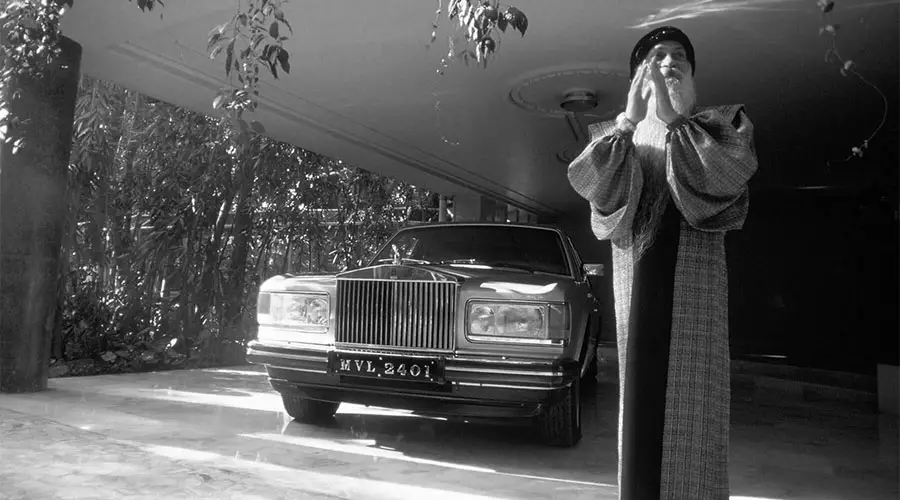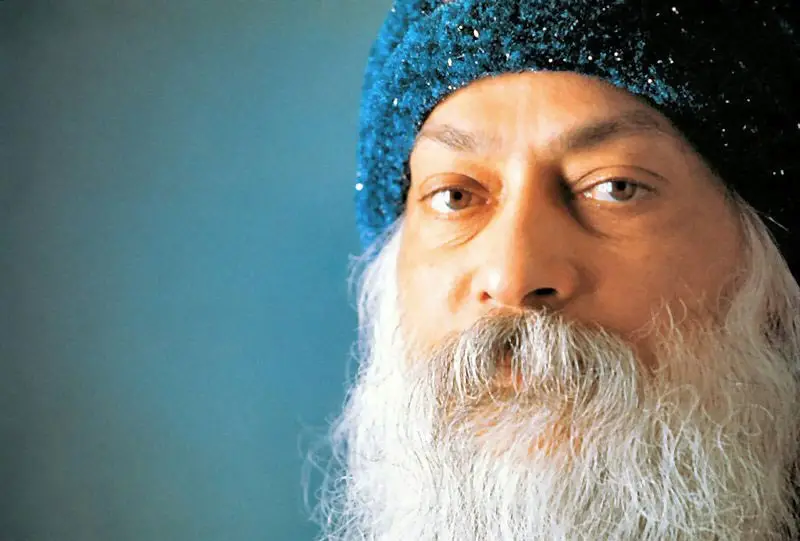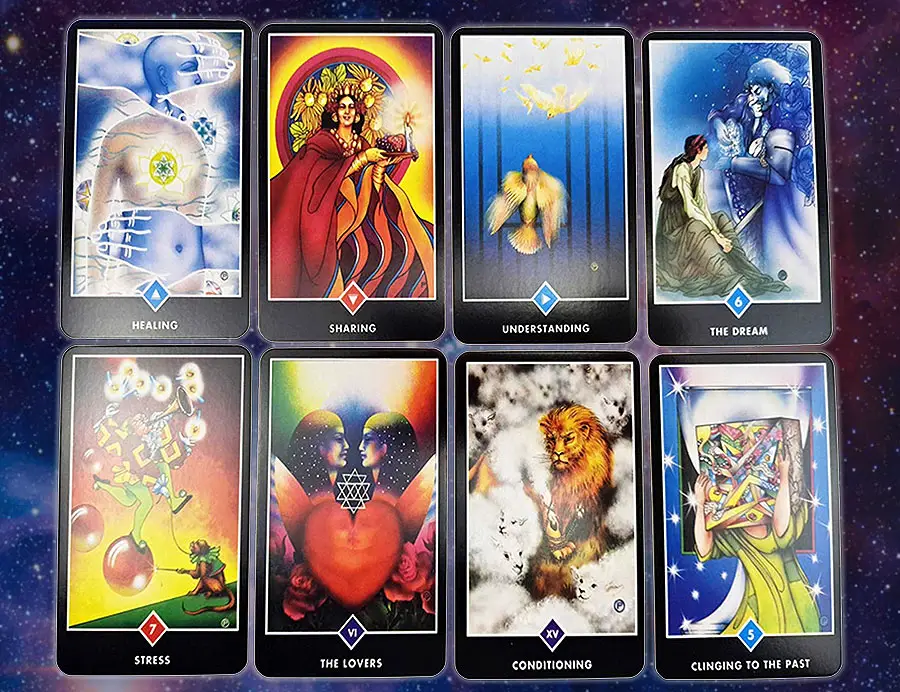It has been over thirty years since Osho passed away, and interest in his lectures and writings is perhaps greater than ever. He is one of the most high-profile spiritual teachers of all time, and in this article, we are going to look at why Osho is so famous.
Osho is one of the most famous spiritual teachers of all time because of organic interest in his philosophy, as well as his mysticism and philosophy of sexual liberation appealing to the Western audience in a time when East and West came together. Osho was also able to garner attention through owning 94 Rolls Royces, and being involved in high profile controversies during his lifetime.

In this article we are going to look at eleven reasons why Osho is so famous:
1) Osho obtained enlightenment at the age of 21
According to Osho, he became enlightened on March 21 1953, at the age of 21. He was meditating under a tree in the Bhanvartal garden in the city of Jabalpur. An avid reader from an early age and a respected debater, he went on to become a philosophy professor. His lectures were enormously popular, paving the way for his eventual entrance into a broader public spotlight. In 1966 he resigned from teaching at the university, and became a guru and teacher of meditation. A large part of Osho’s fame has been organic interest and excitement in his consciousness, as more and more people have recognized what perhaps could be called his state of enlightenment.
2) Osho advocated for more liberal attitudes about sex in the 1960s
He created scandals in Indian society in 1968 in a series of lectures called the From Sex to Superconsciousnes, and became known as the “sex guru”. He challenged orthodox religious leaders, saying that life is to be experienced and enjoyed, rather than denied and avoided, which he believed was the attitude that religion was teaching. His message of sexual liberation combined with eastern mysticism was exactly what the cultural revolution occurring in the West was looking for, who were in the midst of their own sexual liberation, and hungry for eastern spirituality.
3) Osho was an outspoken critic of Mahatma Gandhi
A rebel and contrarian, Osho was highly critical of the widely revered Indian political leader. While praising Gandhi for his honesty, cleanliness, and his respect for different religions, Osho claimed that Gandhi was ignorant and anti-progress. Osho said that Gandhi loved poverty. Throughout Osho’s life he continually advocated for more wealth creation in India through a transformation of thinking about and relating to wealth. In other words, to be in a state of abundance, rather than in poverty consciousnesses. One of his biggest criticisms of Gandhi was that Gandhi remained in a state of thinking that produced poverty.
4) Osho owned 94 Rolls Royces
Osho had a collection of 94 Roll Royce cars, each the exact same model, and he refused to be in any car that was not a Rolls Royce. His detractors have pointed it as being evidence of personality flaws, though most believe he did it as some sort of spiritual statement. Perhaps it was a critique of materialist culture. He himself said that it was partially just to get people’s attention, so that he could then teach them about meditation. Also, he taught that after achieving all possible materialistic wealth, it is only through meditation and spiritually that a person can become more wealthy or satisfied.
5) Osho was embraced by western spiritual seekers
Osho lived from 1931 – 1990, and was alive in a time when there was tremendous interest in the culture and customs of India amongst North Americans and Europeans. His philosophy of sexual freedom, individuality, and mysticism appealed to this new audience, whose own cultural revolutions values were aligned with his message. He began receiving Western visitors in India in the early 1970s, teaching them meditation and offering an entire retreat experience.
in 1981 Osho moved to the United States where him and his group of people began the development of a new spiritual center, which was called Rajneeshpuram. It was only at the end of Osho’s life that he became known as Osho, prior to that he was called Rajneesh. His disciples were known as Rajneeshees. The development of the project ran into problems when their community came into conflict with local residents of the rural region. Eventually the situation boiled over into a bioterror attack and a planned assassination attempt against the state attorney of Oregon, which led to Osho being deported.

6) Osho was deported from the United States and denied intro into 21 countries
Further cementing his identity as a trickster and rebel, Osho was deported from the United States and back to India. The bioterror attack and attempted assassination were allegedly conducted by members of his following without his direct involvement. Osho pleaded guilty to immigration fraud, leading to his deportation.
7) Osho’s following quickly grew to 15 000 when he created his Ashram
We live in a culture where fame is manufactured. Social media followers can be bought, and business interests can dictate what is trendy and popular. However, in the case of Osho, his following swelled to 15 000 people because his philosophy resonated with his audience. His profound insights into meditation and consciousness where recognized and more and more people came to listen to him and learn meditation. In fact, already in the 1960s in India, Osho was filling stadiums with 20 000 people to hear his lectures.
8) Osho’s ashram in India is still a popular destination
The ashram, known as the OSHO International Meditation Resort, is located 120 kms south-east of Mumbai. It continues to offer retreats experiences, as well as online spiritual courses, and even a series of smart phone apps about meditation, his tarot card deck, and more.
9) Osho’s captured his philosophy in books and recordings
Part of the ability of Osho’s legacy to be continued so well is that he captured his philosophy very well in the form of books and recordings of lectures. His large library of books makes it easy for those who are interested to dive into his philosophy, and with the development of internet video streaming platforms, the many video and audio recordings of his lectures are available to the whole world. In fact, Osho’s books and lectures have become more popular since his death in 1990.
10) Osho created the popular Osho tarot card deck
Osho created a deck of tarot cards, which is immensely popular, and has introduced him to a different audience than his lectures. Released in 1994, the deck was a collaboration with artist Ma Deva Padma, a female American artist who lived in the Osho ashram. This is my personal favorite tarot card deck, and it is much more-accessible and easy-to-use than other decks, such as the Crowley deck.
Click here to check tarot deck pricing on Amazon
11) Osho was the subject of a Netflix series
In 2018 Netflix released a six-part series on Osho’s Rajneeshpuram ashram project in Oregon. The series was well received by audiences and critics alike, and is highly critical of Osho and his following, depicting him in a less than flattering manner. Despite it being arguably bad press, the series has served to further boost Osho’s profile in the minds of the general public.
Recommended Reading
If you want to continue exploring this subject more deeply, you can see which books I recommend by clicking here.

